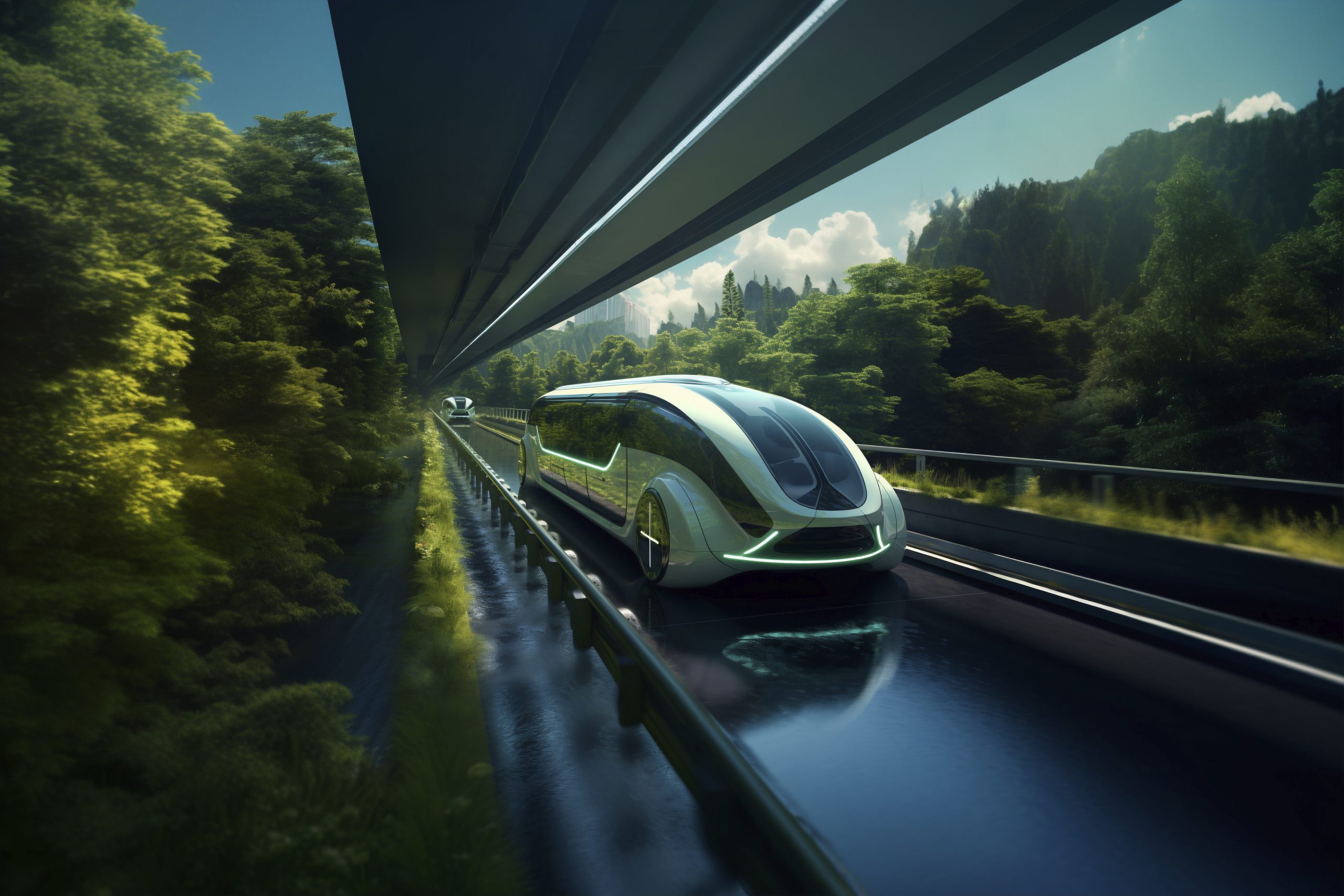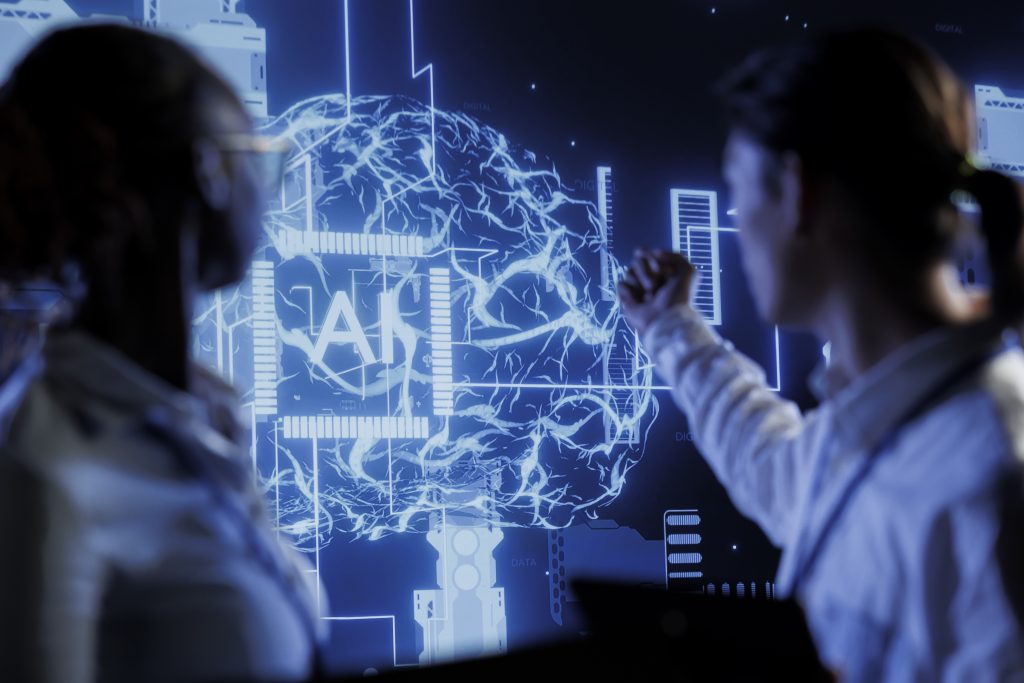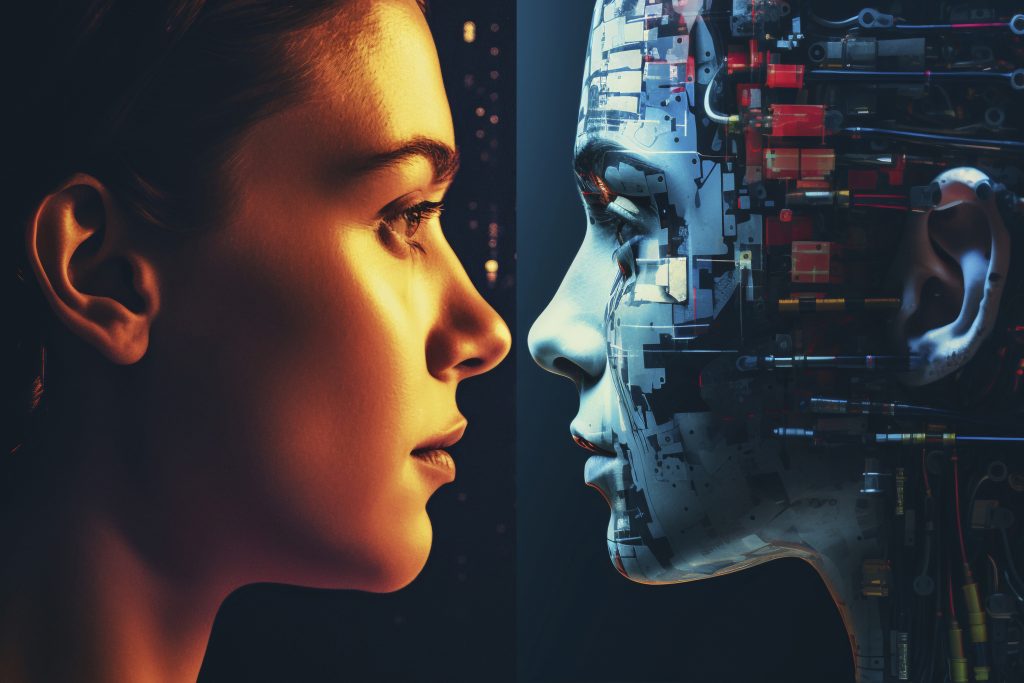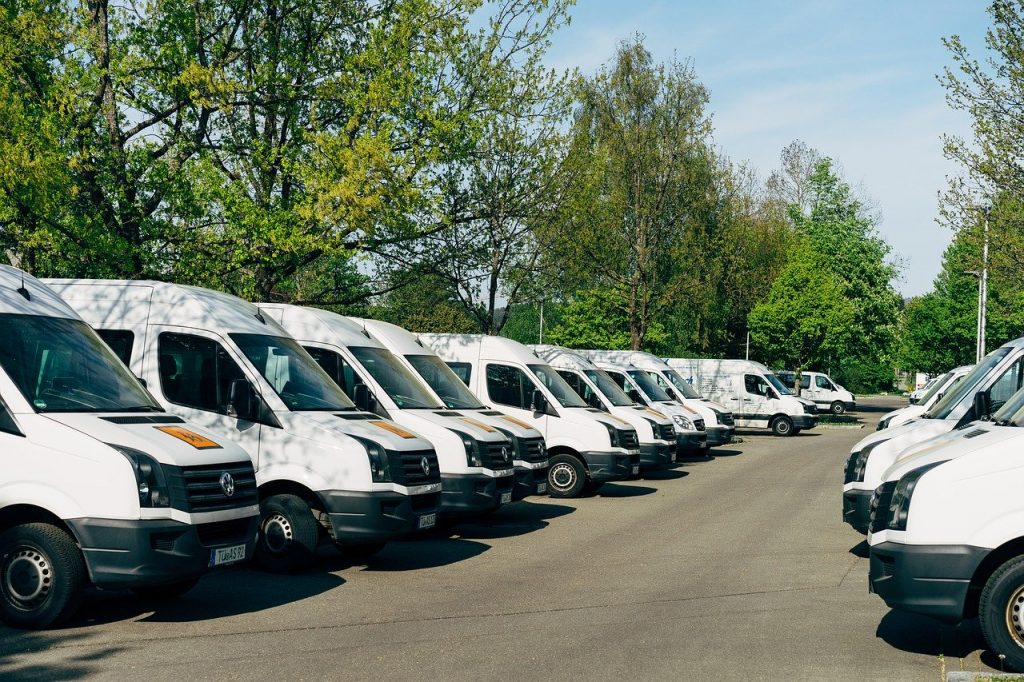
Artificial Intelligence and Public Transportation – A Comprehensive Guide
The last decade has witnessed the incredible impact of Artificial Intelligence on several industries at an unprecedented pace. It is transforming the way businesses operate and consumers engage. From automating routine manual tasks to promoting breakthrough innovations, this boon of technology is reshaping user experiences every day. Among several industries, the impact of AI in transportation and logistics is remarkable. Interestingly, the relationship between Artificial Intelligence and public transportation is getting stronger.

Importance of AI in Shaping Smart Cities and Urban Mobility
As cities around the world grow more crowded and complex, traditional public transportation systems are struggling to keep up with rising demands. This is where AI steps in — not just as a technological upgrade, but as a transformative force for smart city development and sustainable urban mobility.
AI is at the heart of smart cities, enabling them to be more connected, efficient, and responsive. In the context of transportation, AI analyzes massive volumes of data — from GPS signals and traffic cameras to ticketing systems and weather reports — and turns it into actionable insights that improve how people move within a city.
Here’s why Artificial Intelligence in transportation and urban mobility is immensely important:

1. Real-Time Decision-Making
AI systems can analyze current traffic patterns and passenger data to make quick, informed decisions. This helps in dynamically adjusting bus schedules, optimizing traffic signals, and preventing bottlenecks.
2. Seamless Multimodal Travel
With AI-powered platforms, passengers can plan trips that combine different forms of transportation — like buses, trains, bike-sharing, and ride-hailing — in the most efficient way possible. This brings the concept of Mobility-as-a-Service (MaaS) to life.
3. Improved Resource Allocation
AI helps cities deploy buses, trains, and staff more efficiently based on predicted passenger volumes and demand patterns, saving time, fuel, and operational costs.
4. Environmental Sustainability
AI plays a big role in reducing emissions by optimizing routes, minimizing idle time, and encouraging the use of eco-friendly transport modes. This way Artificial Intelligence and transportation align with global climate goals and create healthier urban environments.
5. Inclusive and Accessible Transit
AI can tailor services for people with disabilities or those living in underserved areas by analyzing usage patterns and customizing offerings, making mobility more equitable.
6. Future-Ready Infrastructure
As urban populations rise, cities must evolve. AI ensures transportation systems are scalable and resilient, ready to integrate with future technologies like autonomous vehicles, 5G networks, and smart traffic infrastructure.
In this article, we will explore the applications of AI in the public transport industry, benefits transport businesses can drive from AI, and steps to get started with AI in public transit.

Understanding AI in the Context of Public Transportation
Before diving into how artificial intelligence in travel and transport is transforming traditional ways, first, it’s important to understand what AI really means in the world of public transportation — and how it’s different from just automation or digital tools.
What Technologies are Involved in AI-driven Public Transit?
Artificial Intelligence refers to the ability of machines or software to mimic human intelligence. That means AI systems can learn from data, recognize patterns, make decisions, and improve over time — all with minimal human intervention.
In public transportation, AI isn’t just about self-driving buses or fancy robots. It’s about using smart algorithms and data-driven models to help transport systems run smoother, safer, and more efficiently.

Core AI Technologies Driving Transit Innovation
Several AI subfields are especially relevant to public transportation:
Machine Learning (ML)
Helps systems learn from past data to predict future outcomes — for example, forecasting passenger demand, estimating arrival times, or spotting maintenance needs before breakdowns happen.
Computer Vision
Uses cameras and sensors to understand visual data. This can power smart surveillance systems, detect overcrowding on platforms, or even monitor driver fatigue in real-time.
Natural Language Processing (NLP)
Enables AI to understand and respond to human language. NLP powers chatbots and voice assistants that help commuters get route info, schedules, or report issues.
Predictive Analytics
Uses historical and real-time data to anticipate what’s coming next — like traffic conditions, breakdown risks, or peak travel times — so transit operators can act ahead of time.

AI vs. Traditional Automation
It’s important to note that AI is not the same as automation. Traditional automation involves predefined rules — “if X happens, do Y.” AI goes further: it adapts, learns, and even recommends new actions based on complex patterns that humans might miss.

For example:
A. A regular system might display a fixed bus schedule
B. An AI-powered system will adjust that schedule in real-time based on weather, traffic, and rider demand.
Applications of AI in Travel & Public Transportation
Artificial Intelligence and Machine Learning are not just a buzzword in public transit — it’s actively powering smarter, more efficient, and more responsive transportation systems around the world. From the way buses are scheduled to how commuters interact with transit apps, AI is working behind the scenes to make things better for both operators and passengers.
Let’s break down the key areas where AI is making a real difference:
1. Predictive Maintenance
One of the most impactful uses of AI in public transit is in predicting when a vehicle is likely to fail — and fixing it before it does.
A. AI systems analyze data from sensors installed in buses, trains, or metro cars to detect wear and tear in real-time.
B. Instead of relying on a fixed maintenance schedule, transport authorities can perform just-in-time maintenance, reducing costs and avoiding service disruptions.
C. This leads to fewer breakdowns, safer rides, and longer-lasting equipment.
2. Route Optimization & Traffic Management
AI helps keep city traffic moving — not just for individual vehicles, but for entire fleets.
A. Algorithms analyze real-time traffic, road closures, weather, and even passenger load to optimize routes dynamically.
B. Public transport vehicles can be re-routed in real time to avoid congestion, accidents, or delays.
C. Cities can also adjust traffic signal timings based on AI predictions to prioritize buses or emergency vehicles.

3. Passenger Flow Analysis
Understanding how people move helps cities plan better — and AI makes that insight sharper than ever.
A. Cameras, ticketing systems, and mobile apps feed data to AI models that analyze passenger movement patterns.
B. Transit agencies can identify overcrowded routes, peak hours, and underused lines.
C. This helps with smarter scheduling, better resource allocation, and even infrastructure planning (like adding new stops or increasing fleet size).
4. Smart Ticketing and Fare Collection
AI is making ticketing more seamless, efficient, and fraud-proof.
A. AI-based fare systems can suggest the best ticket type for a commuter based on their travel history.
B. Dynamic pricing models can adjust fares based on peak demand or travel distance.
C. Fraud detection algorithms can flag unusual transactions or attempts at fare evasion in real time.
5. Autonomous Public Transport
While still emerging, AI is at the core of self-driving public transport vehicles.
A. Autonomous shuttles and buses are already being piloted in smart cities around the world.
B. These vehicles use AI for navigation, obstacle detection, pedestrian awareness, and safe route following.
C. Over time, autonomous transit could reduce operating costs and bring mobility to remote or underserved areas.
6. AI Chatbots and Virtual Assistants
AI is also improving how commuters get information and interact with transit systems.
A. AI-powered chatbots help passengers with route suggestions, fare info, service alerts, and lost-and-found queries — 24/7.
B. These assistants can work across channels — like mobile apps, websites, or even smart kiosks.
C. Natural Language Processing (NLP) ensures these bots understand and respond like a human agent would, often in multiple languages.

7. Safety and Surveillance
AI-driven video analytics systems enhance safety across buses, stations, and platforms.
A. Cameras integrated with AI can detect suspicious behavior, unattended bags, overcrowding, or even acts of aggression.
B. Real-time alerts can be sent to authorities or security personnel for immediate action.
C. This helps create a safer and more secure commuting environment for all.
Together, these applications show that AI is not a futuristic dream — it’s already here, transforming public transportation into a faster, smarter, and more user-friendly experience. And as these systems continue to evolve, we’re just beginning to scratch the surface of what’s possible.
Benefits of AI in Public Transportation
Let’s explore the key benefits AI brings to public transportation:
1. Enhanced Operational Efficiency
AI helps transit operators run their fleets smarter, not harder.
A. By analyzing real-time and historical data, AI systems optimize vehicle deployment, routes, fuel consumption, and scheduling.
B. Predictive maintenance powered by AI reduces downtime and repair costs by detecting problems before they become critical.
C. Resource planning becomes more accurate, ensuring that vehicles, drivers, and infrastructure are used at maximum efficiency.
Result: More on-time arrivals, fewer breakdowns, and cost savings across the board.

2. Improved Passenger Experience
At the heart of public transportation is the commuter — and AI is making their journey better in countless ways.
A. Passengers get real-time updates about delays, route changes, and arrival times via mobile apps or digital boards.
B. AI chatbots assist riders with trip planning, fare queries, and service alerts 24/7.
C. Crowding predictions help operators dispatch more vehicles or reroute to avoid overpacked buses and trains.
Result: A smoother, more predictable, and stress-free commuting experience.
3. Data-Driven Decision Making
AI transforms complex transit data into actionable insights.
A. City planners and transport agencies can analyze patterns in ridership, traffic, weather, and fuel usage.
B. These insights help in designing more effective transport policies, infrastructure upgrades, and future expansion plans.
C. AI uncovers patterns that are invisible to the human eye, enabling more proactive planning.
Result: Smarter urban mobility systems built on real-world data, not guesswork.
4. Cost Reduction
Running a public transit system is expensive — but AI helps cut those costs significantly.
A. By optimizing fuel use, reducing idle time, and predicting maintenance needs, transit agencies spend less on operations.
B. AI reduces the need for manual monitoring, inspections, or scheduling — all of which can be automated intelligently.
Result: Higher ROI for public transportation investments with better service at lower cost.

5. Increased Safety and Security
AI plays a vital role in keeping both passengers and staff safe.
A. AI-enabled surveillance systems detect suspicious behavior, unattended bags, or emergencies and alert authorities in real-time.
B. Driver monitoring systems can detect fatigue or distraction and send alerts before accidents happen.
C. Autonomous vehicles powered by AI are programmed to obey traffic rules strictly and react faster than humans in critical situations.
Result: A safer and more secure environment for everyone on board.
6. Environmental Sustainability
Public transportation is already greener than individual cars — and AI makes it even better.
A. AI reduces fuel usage by optimizing routes, avoiding congestion, and preventing idling.
B. Better scheduling and passenger flow management reduce unnecessary trips and emissions.
C. Encouraging the use of public transport through smarter services leads to fewer cars on the road.
Result: Cleaner air, less congestion, and a big step toward sustainable cities.
Challenges and Considerations
While AI offers immense potential for public transportation, it’s not without challenges — both technical and practical — that cities and transit agencies must carefully navigate.
1. Data Privacy and Security
AI systems rely heavily on vast amounts of user and operational data. Ensuring this data is securely stored, processed, and anonymized is crucial to maintaining public trust and meeting regulatory requirements like GDPR.
2. High Implementation Costs
Deploying AI solutions — from predictive analytics to autonomous vehicles — involves significant upfront investment in hardware, software, and skilled personnel. For budget-constrained public systems, this can be a major hurdle.
3. Integration with Legacy Systems
Many public transport systems still run on outdated infrastructure. Integrating AI into these environments often requires overhauls or workarounds, which can be time-consuming and costly.
4. Skill Gaps and Change Management
Transit authorities may lack the expertise to implement and manage AI solutions in-house. Additionally, staff may resist adopting new tools without proper training or clear communication of the benefits.
5. Ethical and Equity Concerns
There’s a risk of algorithmic bias, where AI systems unintentionally prioritize certain routes, neighborhoods, or user groups. Ensuring fairness and accessibility across all communities is critical.
6. Public Perception and Trust
AI, especially in areas like surveillance or autonomous vehicles, can raise concerns about safety, privacy, and job displacement. Gaining public buy-in is essential for successful adoption.
Real-World Example of Artificial Intelligence in Travel and Transport
Cities worldwide are already embracing AI to transform public transit. Singapore uses AI for predictive maintenance in its MRT system, reducing breakdowns.

London leverages machine learning to optimize bus schedules based on passenger flow. In the U.S., San Francisco’s Muni uses AI to adjust traffic signals dynamically for faster transit movement.
Meanwhile, Helsinki integrates AI into its Mobility-as-a-Service (MaaS) platform, enabling seamless multimodal travel. These examples highlight how Artificial Intelligence in transportation and urban mobility improves efficiency, reduces costs, and enhances rider experience — proving its value in the real world.
Future of AI in Public Transit
The future of AI in public transportation points to greater personalization, automation, and integration. Expect fully autonomous buses, AI-driven mobility-as-a-service (MaaS) platforms, and real-time system-wide coordination across transport modes.
With advancements in 5G, IoT, and edge computing, artificial intelligence and machine learning in transportation will enable instant decision-making and hyper-efficient transit systems. AI will also support dynamic pricing, demand-responsive routes, and carbon footprint tracking, making urban mobility smarter, greener, and more adaptive to city needs.
How to Get Started with AI in Transit
Adopting AI in public transportation doesn’t require a full system overhaul on day one. Transit agencies can begin with small, high-impact initiatives and scale over time.
A. Assess Current Operations and Data Readiness
Start by identifying inefficiencies — such as delays, maintenance issues, or low ridership areas — and evaluate if you have the data to support AI models. Clean, well-organized data is essential.
B. Define Clear Objectives
Focus on solving one problem at a time. Whether it’s reducing downtime, improving scheduling, or enhancing customer support, having specific goals ensures a more effective AI strategy.
C. Choose the Right Use Case to Pilot
Begin with pilot projects like predictive maintenance, smart ticketing, or AI chatbots. These have relatively low complexity and high ROI.
D. Collaborate with AI Technology Partners
Partner with experienced AI vendors or consultants who understand both transit operations and the technical aspects of AI integration.
E. Train Teams and Stakeholders
Equip your staff with the knowledge to use and maintain AI tools. Offer training sessions to ensure smooth adoption and build internal confidence.
F. Scale Based on Insights
Use learnings from early pilots to refine your approach, expand to other use cases, and gradually integrate AI into core operations.

Take your Public Transit Business to the Next Level with AI-powered Public Transit Management System
Adopting AI in public transportation doesn’t require a full system overhaul on day one. Transit agencies can begin with small, high-impact initiatives and scale over time.
Assess Current Operations and Data Readiness
Start by identifying inefficiencies — such as delays, maintenance issues, or low ridership areas — and evaluate if you have the data to support AI models. Clean, well-organized data is essential.
Define Clear Objectives
Focus on solving one problem at a time. Whether it’s reducing downtime, improving scheduling, or enhancing customer support, having specific goals ensures a more effective AI strategy.
Choose the Right Use Case to Pilot
Begin with pilot projects like predictive maintenance, smart ticketing, or AI chatbots. These have relatively low complexity and high ROI.
Collaborate with AI Technology Partners
Partner with experienced AI vendors or consultants who understand both transit operations and the technical aspects of AI integration.
Train Teams and Stakeholders
Equip your staff with the knowledge to use and maintain AI tools. Offer training sessions to ensure smooth adoption and build internal confidence.
Scale Based on Insights
Use learnings from early pilots to refine your approach, expand to other use cases, and gradually integrate AI into core operations.

This is high time you should merge Artificial Intelligence and public transportation for better services and customer experience.




